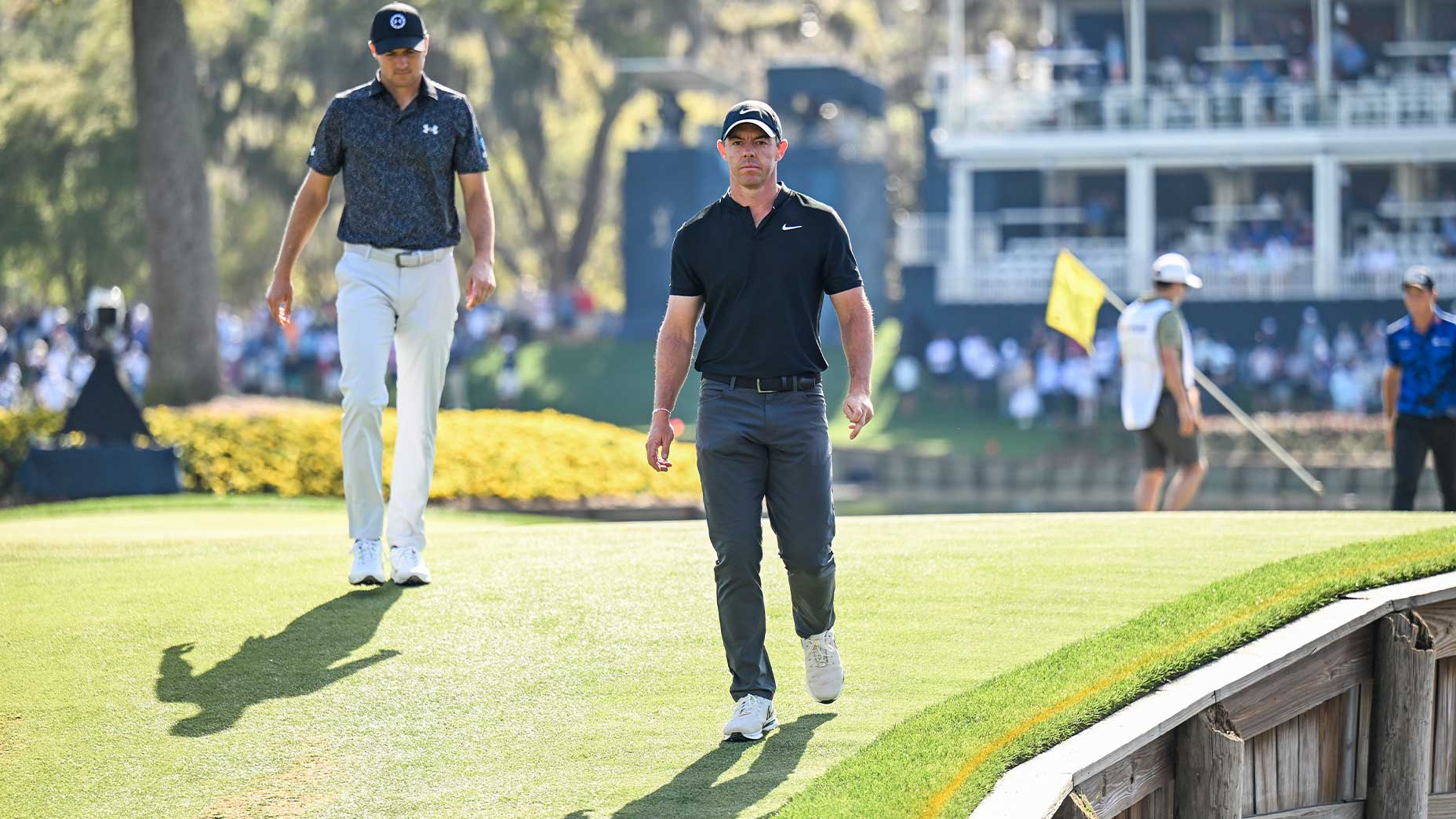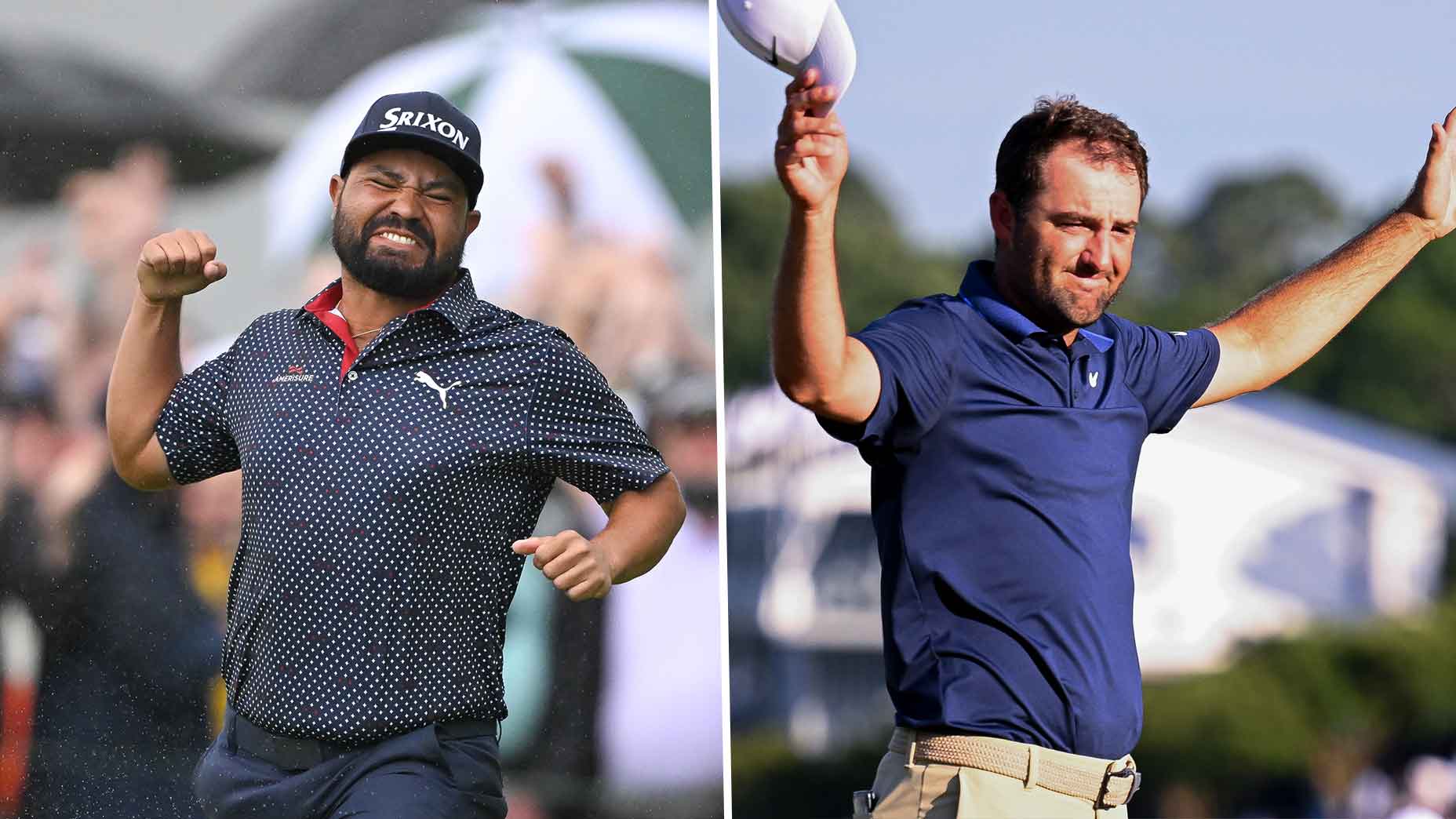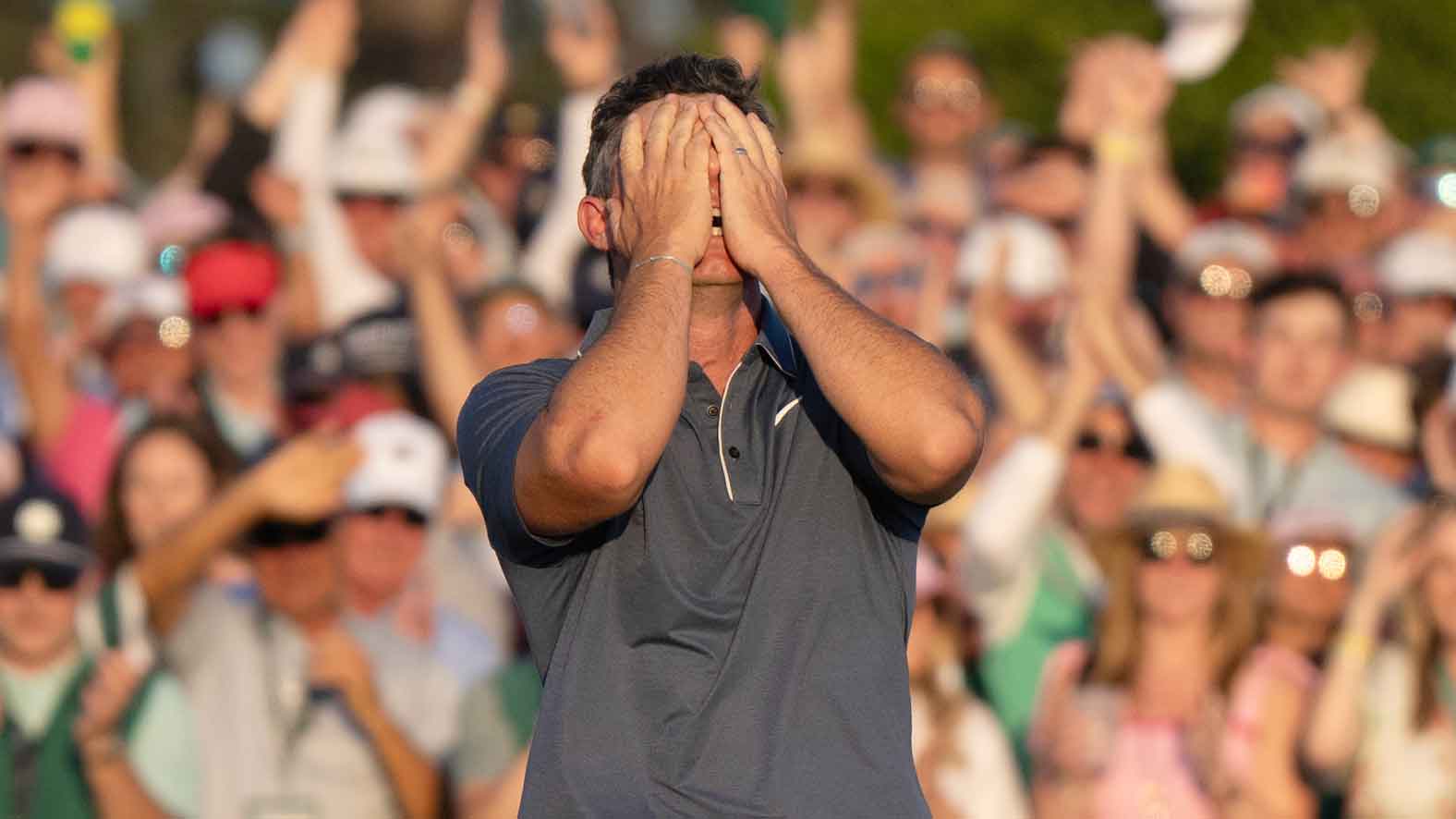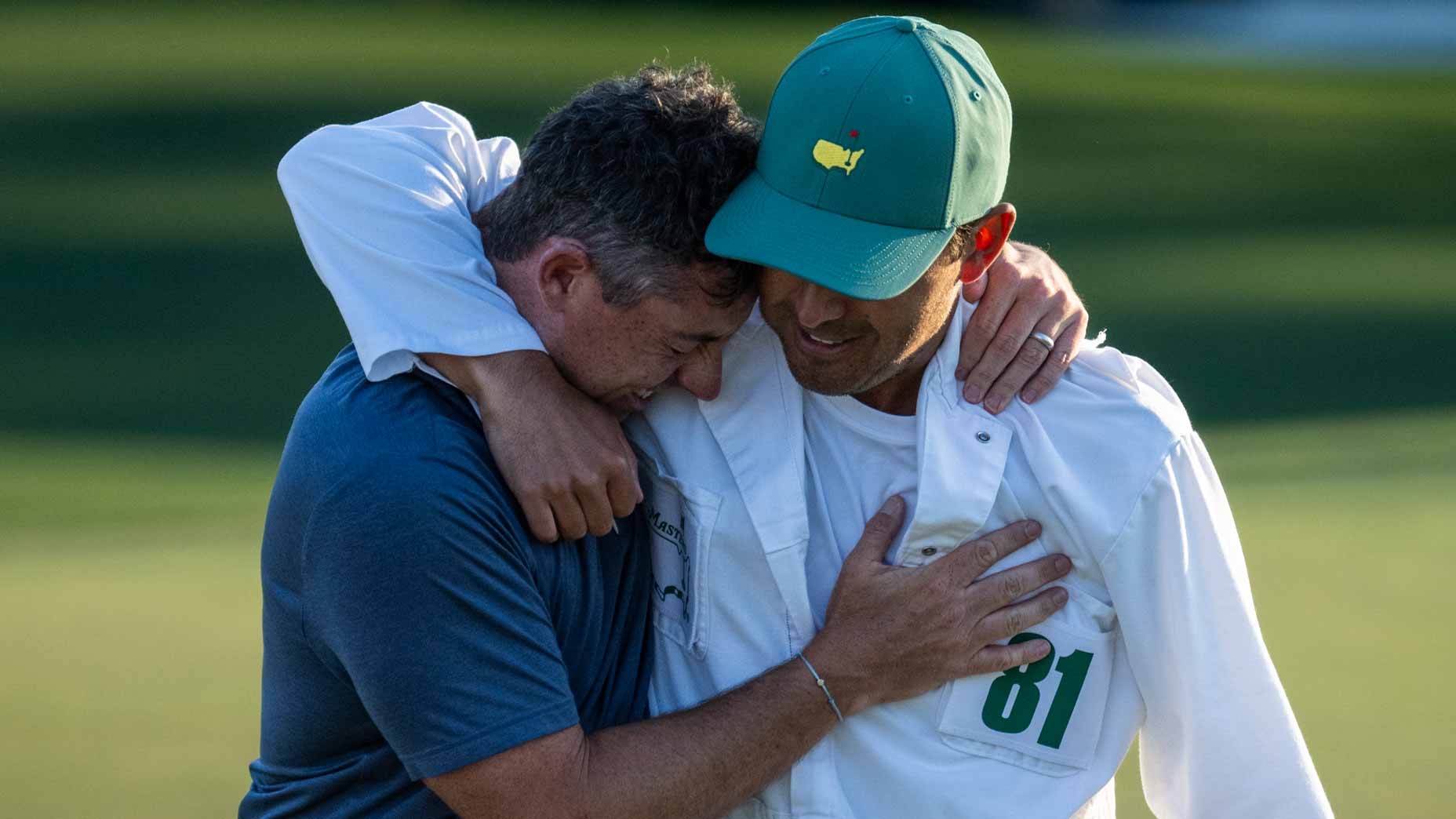A mishit. A revisitation of a rules scenario. A flirtation with history. A consideration of the daring. A thought to the opposite.
Dramatics. Nothing mundane.
But no, Rory McIlroy’s 7th hole on Friday at TPC Sawgrass probably wasn’t as funky as his 7th hole on Thursday. How could it be?
But it was at least adjacent.
It’d been on the 7th, during the Players Championship’s first round, where McIlroy went left off the tee, into the water, and right into a circus. Where did it cross into the penalty area? Where could he drop? McIlroy had an idea. But so did playing partners Jordan Spieth and Viktor Hovland, and the threesome’s back-and-forth was a must-watch. Hovland even mentioned turtles at one point.
Groupings, though, play the first and second rounds together.
So what would go down when they returned to the scene on Friday?
A McIlroy par, should you be just interested in the scores. But it was one that also featured:
— The mishit. This time, McIlroy went right with his tee ball, across a cart path and close to some trash bags. He was allowed a drop away from them.
— The revisitation of a rules scenario. Had everything gone by the book on Thursday? McIlroy had thought so. Notably, Spieth and Hovland didn’t talk to reporters afterward. But what about the rules officials?
Friday, those who watched Golf Channel’s broadcast heard from Mark Dusbabek, a PGA Tour rules man who’s joined the booth over the past few years. He sounded OK with McIlroy’s drop.
Here was his complete thought, for those into the rules:
Rory McIlroy, Jordan Spieth and Viktor Hovland discuss McIlroy's drop on No. 7.
— PGA TOUR (@PGATOUR) March 14, 2024
Rory makes double bogey to move from solo leader to T2. pic.twitter.com/dkV6a5Q22W
“I think the key in that whole situation, the phrase is reasonable judgment. We’re always trying to use a reasonable judgment. If you and I were going out to play, and one of us hits it in the penalty area, you’re going to use a reasonable judgment to where it last crossed. The rules of golf require you to always pick a spot. You’re always going to estimate that spot. You might not be right on, you might not be exact, but you’re going to do your best job. We looked at TV coverage, we talked to marshalls. Our video operators, Orlando Pope and Rich Pierson, in the booth here were all looking at different angles. Rory was talking to the other players, Viktor and Jordan, and they were trying to help him actually because they don’t want him to get in trouble and be penalized for dropping in the wrong spot. So when you consult with them, you try to come to the best conclusion that you can for your reasonable judgment of where it last crossed.”
— The flirtation with history. McIlroy had started his round this way: bogey, birdie, bogey, birdie, birdie, bogey.
But, according to the Golf Channel broadcast, he had never started a Tour round, across 856 played, without a par over his first seven holes.
Interesting.
— The consideration of the daring. Here was what was presented to McIlroy:
Nothing much.
Below him were pine needles. Behind him were overhanging tree branches. About 40 yards in front of him were overhanging tree branches. Just past that was water. Just past that was a bunker. Just past that, finally, was the green. He was just 130 yards away, but the traffic was bad.
Why Rory McIlroy invoked ‘karma’ and ‘conscience’ after 2 awkward dropsBy: James Colgan
But it appeared he looked only at that option, which would, yeah, require some sort of dart that would fly underneath the tree, be fast enough to clear the water and be slow enough to not plug in the bunker or shoot through the green. You know, simple stuff.
Near the ball, he took a practice swing without a club. He grabbed an iron. He choked down on it. Near the ball again, he looked up. He took a half-swing. He looked ahead. He stepped back and talked with his caddie, Harry Diamond. Diamond stepped away. McIlroy stepped back to the ball. He checked to see if the branch behind him would interfere. He thought it wouldn’t. He took a practice swing. He looked up four times. He took another practice swing. He looked up four more times. He was ready.
— The thought to the opposite.
On-course analyst Roger Maltbie believed that McIlroy should punch out to the fairway to the left. Then pitch on and maybe make par. But take the big score out of play. The safe route.
Said Maltbie on the broadcast: “Yeah, I don’t see him playing in that direction. Has to keep it under a limb of an oak tree. May have some swing problem in his backswing with overhanging limbs. I don’t see what it would gain him to try and do that. I think going out sideways left would be the more prudent play.”
Said analyst Gary Koch: “With the hole location over on the far right-hand side of the green, if he can get something up there short and left, I mean, he would have an angle, but it’s a risky shot, obviously.”
Said Maltbie: “His ball’s going to have to have a lot of speed to be the height that it needs to be to get underneath the limb and get across that water. It’s going to have to be moving.”
There was also a question why Diamond wasn’t talking his boss off the shot.
— McIlroy then swung.
What a recovery shot from @McIlroyRory 👏
— PGA TOUR (@PGATOUR) March 15, 2024
Rory cards the first par of his second round at No. 7. pic.twitter.com/eyvodWr6zx
His ball screamed underneath the tree in front of him.
It floated over the water past the tree.
It thumped into the bunker.
It bounced out.
It finished on the green, about 50 feet away.
Said Maltbie on the broadcast: “It skips through that bunker. Are you kidding me?”
Said Koch: “Oh my goodness.”
Said Tirico: “Wow.”
From there, McIlroy two-putted for his par four. He finished with a one-over 73.
On Saturday, he’ll play 7 again.











